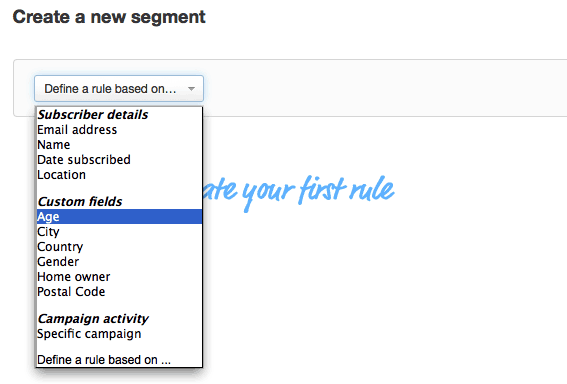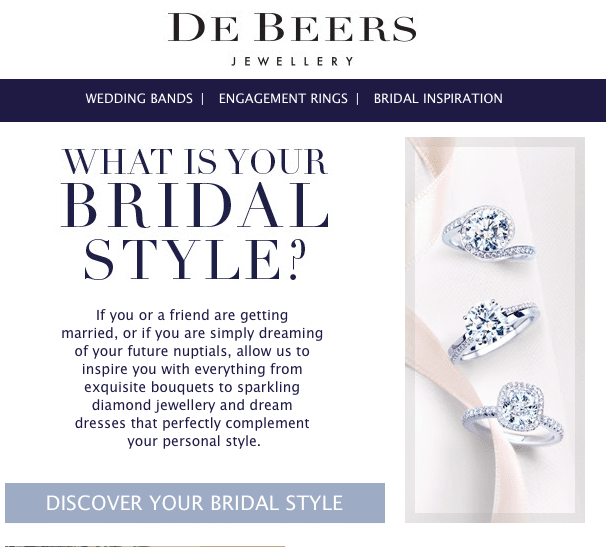Published March 2019, updated May 2019
Ever wondered how many emails are sent per day around the world? How about the number of emails that hit your inbox? There are a lot of emails getting sent and received, and these numbers are probably higher than you think.
Pause for a moment and try to estimate the average number of emails that come into your own inbox on a daily basis. Is it 10? 50? More than 100?
Modern inboxes are noisy, crowded, and extremely competitive. For marketers, that means most emails are just part of the cacophony and they’re probably not getting opened or clicked.
So what can you do to stand out within the inbox? You need emails that are doing something unique and special.
Read on to understand the truth about how many emails are sent each day as well as a few ways you can make your email marketing efforts more effective.
How many marketing emails are sent per day?
show that, by the end of 2019, we can expect to see 2.9 billion worldwide email users (which is more than one-third of the global population). In regard to email sends per day worldwide, we know that about 269 billion emails were sent and received each day in 2017, and that figure is expected to grow to almost 320 billion daily emails in 2021, according to Statista.
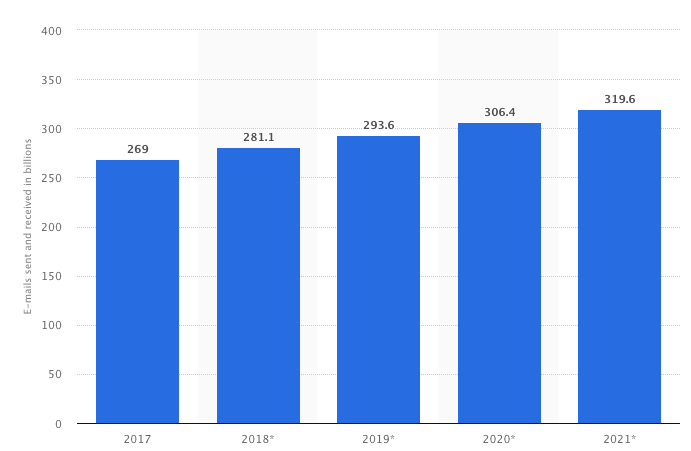
Radicati takes things a step further and breaks down the daily email traffic in a bit more detail. This data set shows that, as of 2018, there are about 124.5 billion business emails sent and received each day, while there are about 111.1 billion consumer emails sent and received each day.
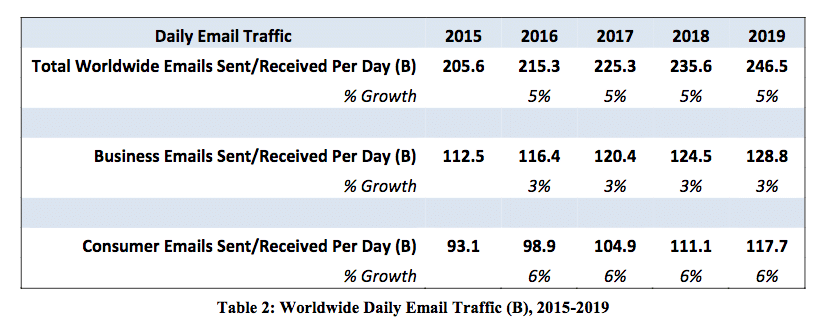
At a personal level, DMR reports show that the average office worker receives 121 emails per day. That’s a lot of emails, and they come in various forms. From content, deals, event invitations, and beyond, all of these email messages are trying to convey some form of value to the recipient.
However, is every email sender doing a good job of conveying value? And, if not, how can they do a better job? If you’re not providing values in your emails, then it’ll be difficult for your subscribers to separate you from the rest of their emails.
How B2C brands can break through the noise of the inbox
For many brands, increasing the value of email comes when they take the time to nail down what their subscribers want and need from them.
In fact, marketing expert Jay Baer wrote an entire book on this approach called Youtility. Baer says:
“Youtility is marketing upside down. Instead of marketing that’s needed by companies, Youtility is marketing that’s wanted by customers. Youtility is massively useful information, provided for free, that creates long-term trust and kinship between your company and your customers.”
It makes sense. The more emails provide value and interesting material, the stronger the bond between recipient and sender becomes. In your inbox, you probably have a select group of emails from brands or individuals that you always open because you enjoy reading what they have to say or because you get real, tangible value out of the material included.
This is what brands should be striving for when re-thinking their approach to the modern inbox. Take the time to spell out how you’ll better provide value and build long-term relationships with subscribers (rather than always trying to make the quick sale).
3 steps to better, more valuable emails
From a tactical standpoint, there are three main elements brands can work into their strategy for better, more effective emails.
1. Personalization
means crafting emails that are extremely relevant, timely, and tailor-made for the recipient. It’s time to think about how you can leverage subscriber data to create more personalized and dynamic emails. By integrating your CRM and e-commerce data with your email efforts, for example, you can leverage rich customer profiles and create customer journeys based around data points like past purchases, customer behaviors, birthdays, etc. A good example of this can be seen from Converse, as personalization is used in their subject lines.
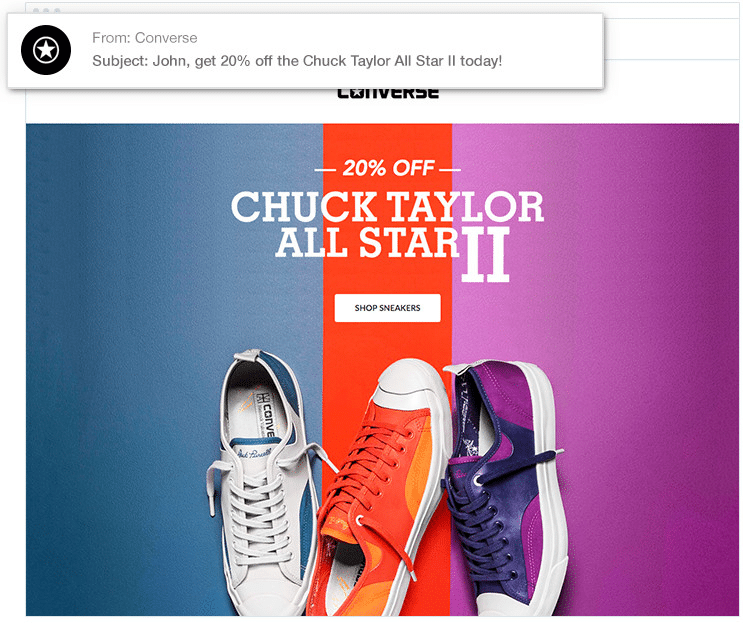
2. Feedback
The best way to find out what a subscriber wants and needs from you is by regularly gathering direct feedback from the source. With the help of surveys, you can find out what’s working and what’s not in regard to your email strategy, and you can start crafting more relevant emails in the future based on the data you’ve collected. Dropbox does this well:
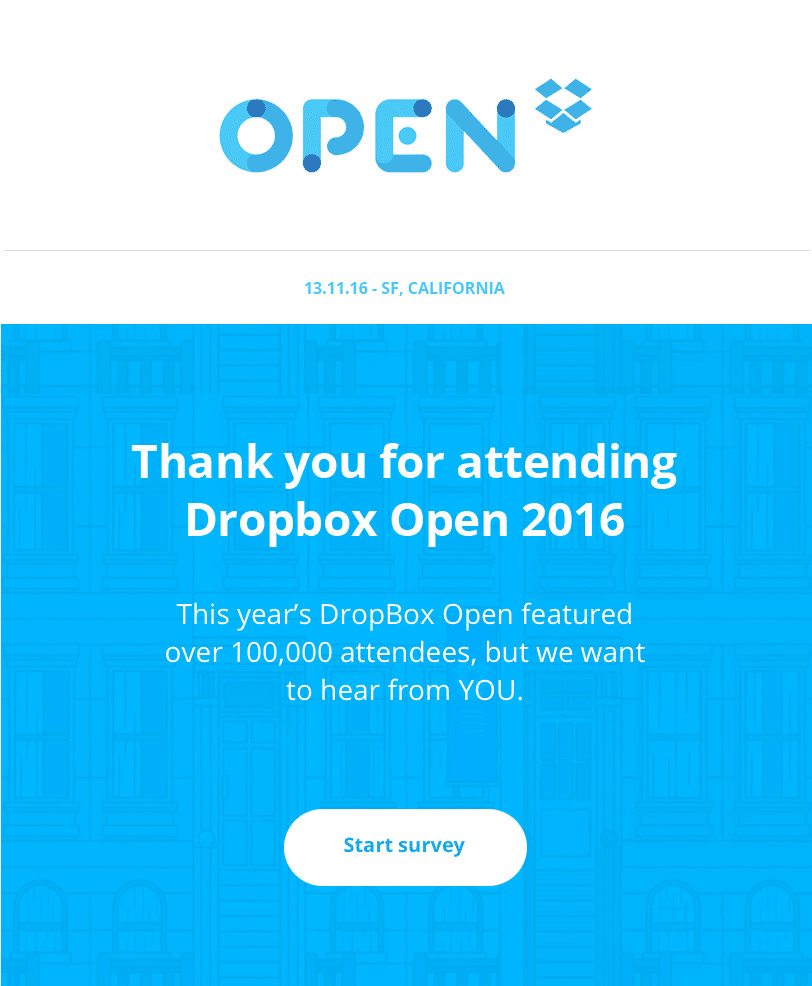
3. Format accordingly
It’s important to understand how your subscribers prefer to read and digest your emails—and then to design accordingly. Keep in mind that 63% of email users now open via a mobile device, so mobile-friendly email templates are a must. Tools like Litmus make testing your email in different email clients and across different devices simpler than ever.
Note: In talking about improving email efforts, it’s also a good idea to consider the cadence of your sends. Taking a quality vs. quantity approach to send cadence enhances brand reputation and can encourage better campaign deliverability overall.
3 steps to a better email marketing program
With so many emails being sent today, it’s important to refine your email marketing program for quality over quantity content. Frequency is good, but so is taking the right steps to ensure each email is crafted to optimal standards. Here are some steps to consider.
1. Find your company’s brand voice before sending emails
This step is one that, admittedly, some companies may already have figured out. If you don’t, it’s the first thing you should do. Your email marketing program should reflect your company’s brand voice. Every message, from the subject line to the CTA, should echo your brand’s sentiments.
Design plays a huge role too. Color alone is proven to improve brand recognition by 80%. When your emails are similarly designed and promote your brand’s values and characteristics, they will make a greater impact on your readers over time. Your strategy becomes more cohesive and, thus, more effective.
2. Personalization through segmentation
Your emails don’t just need to encompass the spirit of your brand. They should also be extremely relevant to the reader. Think of how many spam emails are sent per day, and how many people send emails to the spam folder because they feel the message isn’t relevant to them.
You want to find the perfect balance between making sure everyone gets the most relevant content and keeping your email cadence consistent. The solution? Divide your email list into segments for more relevancy.
Source: Campaign Monitor
The decision to segment your list gives you a lot of direction for future emails. You can think in terms of what your brand would say to each segment, and what each segments want to know. This makes it a lot easier to keep content relevant without slowing your pace down.
You can also create multiple variations of the same email by tailoring your messages for each segment. Even though you’re sending the messages to groups rather than individuals, each recipient will feel like the content is geared toward them.
3. Make sure your CTA is optimal
The CTA is arguably the most important part of an email, even more than the subject. Although subject lines are what convinces a reader to open the email, the real measure of the email’s worth is whether it convinces the reader to keep clicking and engaging with the brand.
Email efficiency is less about how many emails are sent per day and more about how effective they are at facilitating engagement. Craft your CTA using power words, direction, interactive graphics, and other popular techniques to make them more inviting.
When the CTA is better, the email itself will have a higher chance of bringing a return on investment. Remember how color is an element of design? Consider getting creative with this approach.
Source: Campaign Monitor
As you can see, this email uses a CTA button colored differently from the rest of the message. It helps the call stand out and draws extra attention to it.
Improving your CTA has another benefit: When you get more people to interact with your emails, you learn more about their preferences. This can help you create more segments and better personalization strategies to improve your overall program in the future.
Wrap up
Now that we see how many emails are sent per day, it’s the time to re-think your email strategy and to come up with a strategy that boosts value and relevance for every subscriber. Use every touchpoint as a meaningful interaction with your subscribers. That’s how you can stand out in a world where their subscribers receive hundreds of emails each day.

